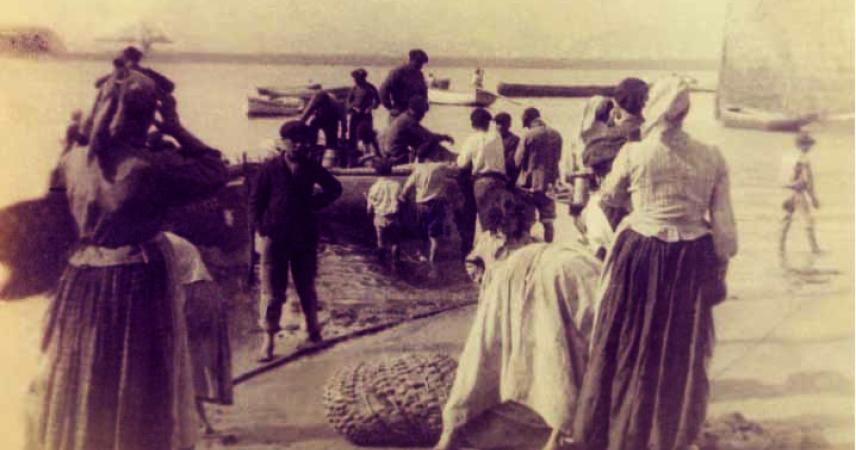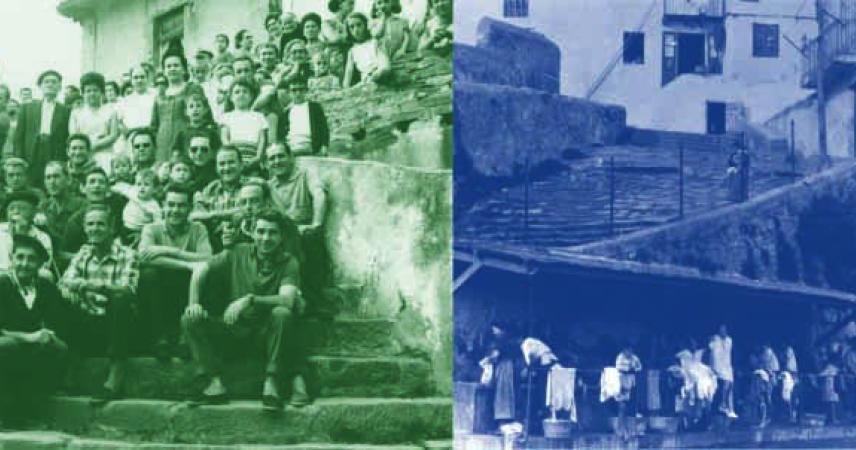The first mention regarding the existence of a port here dates from 1501 and appears in a document referring to legal disputes concerning the jurisdiction of the different villages over the Abra Bay.
The scarcity of land and the extreme densification caused by the economic expansion and population growth in the 18th century meant its town planning features are its crammed houses, narrow alleyways and minimal doors and windows to protect their inhabitants from the north-westerly winds. Another characteristic are the outdoor staircases. This enabled the already small- sized buildings to be split up into storeys and often even into several dwellings per floor.
The building we are in is the public space of reference in the Old Port: During the first half of the 17th century it hosted the meetings of the Seafarers Brotherhood and was the headquarters of the Coastal Pilots Society. And here every morning the cabin boy (or Txo or lantxa-mutil as he was known locally), the youngest member and the earliest riser of the fishing vessel crew would pass by, as he was responsible for called the other crew members one by one.
The influx of visitors during the summer implied an increase in the demand for domestic help in the homes, guest houses and hotels which was covered by a troop of young girls who thus helped out their family economies.
Summer holiday makers also required outside help from women to do the washing and ironing, which also represented a seasonal source of income for many women in the Port. Likewise, the women sardine sellers (or “sardineras”) were also famous, who toured the streets and villages selling fish fresh from the quay, praising its quality and freshness everywhere they went.

